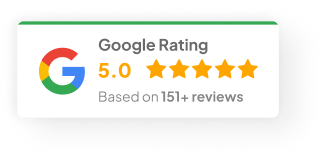17 Feb 25
Which Type of Website is Most Likely to be Biased When Providing Information About a Product?
We’ve all done it. You’re looking to buy something online—a new laptop, maybe a fancy blender—and before you hit that Buy Now button, you check the reviews. Feels smart, right? Well, mostly. But here’s the catch: not all reviews are playing fair.
Roughly 93% of people read reviews before making a purchase. That’s a big number. But plenty of those reviews? Skewed. Sometimes intentionally. Sometimes not. Either way, it’s easy to get led down the garden path.
Let’s break this down. I’ll walk you through where bias shows up, the types of sites most guilty of it, and the sneaky red flags to watch for. That way, next time you’re about to spend your hard-earned cash, you’ll do it with eyes wide open.
What Bias Looks Like in Product Reviews
Bias is basically when the information leans a little too far in one direction. Usually, that direction is whatever makes the site the most money.
It shows up like this:
-
Glowing 5-star reviews that sound too good to be true.
-
Skipping over the flaws like they don’t exist.
-
Pushing certain products up front because the site gets a kickback.
I’ve seen sites that call every product “the best” just because they’re pocketing affiliate commissions on each sale. One client I worked with last year was in the fitness niche—half their “top 10” lists were just stacked with whatever company offered the highest payout that month.
The Usual Suspects: Where Bias Hides Online
Let’s go through the main types of websites you’ll bump into when researching products.
1) E-commerce Giants
Think Amazon, Walmart, Best Buy.
Super convenient. But not exactly saints.
-
Sponsored listings get shoved to the top.
-
Sellers game the system with incentivised reviews.
-
Paid ads quietly blend into your search results.
I once bought a phone charger that had 20,000+ five-star reviews on Amazon. It fizzled out after two weeks. Turns out, the seller had been handing out $5 gift cards in exchange for glowing reviews.
2) Affiliate Marketing Sites
Now we’re getting into murkier waters.
These are your “Top 10 Best Hair Dryers of 2025” blogs. The entire business model depends on you clicking affiliate links and buying. And guess which products they highlight? Yep—the ones paying the fattest commissions.
-
Higher commissions = higher rankings on their list.
-
Weak or missing disclosure statements.
-
Often skip real hands-on testing entirely.
I worked with a blogger in 2020 who admitted they never even tried half the products they reviewed. They just regurgitated manufacturer specs and grabbed stock photos.
3) Review Aggregator Websites
Sites like CNET, Consumer Reports, and TechRadar fall here.
Some are legit. Some… not so much.
-
Sponsored “editor’s picks” sneak in.
-
Brands sometimes pay for “enhanced” reviews or features.
-
Even reputable sites rely on affiliate links these days.
Always check their disclosure pages. The good ones spell out how they make money.
4) Brand Websites & Company Blogs
You’re on the manufacturer’s turf now. Objectivity? Forget it.
-
100% sales-driven.
-
Only highlight positives.
-
Barely mention any downsides.
You’ll never see “Our product tends to break after six months” on an official site. Can’t blame them—it’s marketing—but don’t mistake it for balanced info.
What Fuels the Bias?
Let’s call out the usual culprits:
-
Money Talks: Affiliate deals, sponsored posts, and paid placements drive most of it.
-
Blurry Lines: Some sites don’t separate editorial content from paid promotions.
-
Fake Reviews: Paid, incentivised, or bot-generated reviews pollute user ratings.
-
SEO Games: Ranking tricks push profitable products higher, regardless of true quality.
So, Which Sites Are The Worst Offenders?
Honestly? Affiliate marketing sites top the list for me.
Their entire revenue depends on you clicking and buying. The higher the commission, the higher the product lands on their “best of” lists. And transparency? Usually pretty weak.
E-commerce platforms like Amazon aren’t far behind though. Sponsored placements, manipulated rankings, and review farming all play a part. You might think you’re seeing the most popular option—but you’re really seeing the best-funded one.
How To Spot Biased Reviews (Before They Fool You)
Here’s your simple gut-check list next time you’re browsing:
-
Over-the-Top Praise: Nothing’s perfect. If every review gushes like it’s life-changing, be suspicious.
-
Missing Downsides: Good reviews balance pros and cons. If there’s no critique, that’s a red flag.
-
Hidden Sponsorships: Look for tiny “sponsored” or “affiliate” labels. The shadier ones bury them.
-
Suspicious Testimonials: Reviews that sound fake probably are. Check for vague language, repeated phrases, and generic usernames.
-
Disclosure Statements: Legit sites explain exactly how they earn money. If you can’t find it, walk away.
Final Thought
Look—there’s still plenty of good product info out there. You just need to know where the traps are.
Personally, I always cross-check at least 2-3 sources before pulling the trigger on any big purchase. And if a site can’t be upfront about how they make money? I move on.
So tell me—have you ever bought something online that totally flopped because you trusted a sketchy review?


